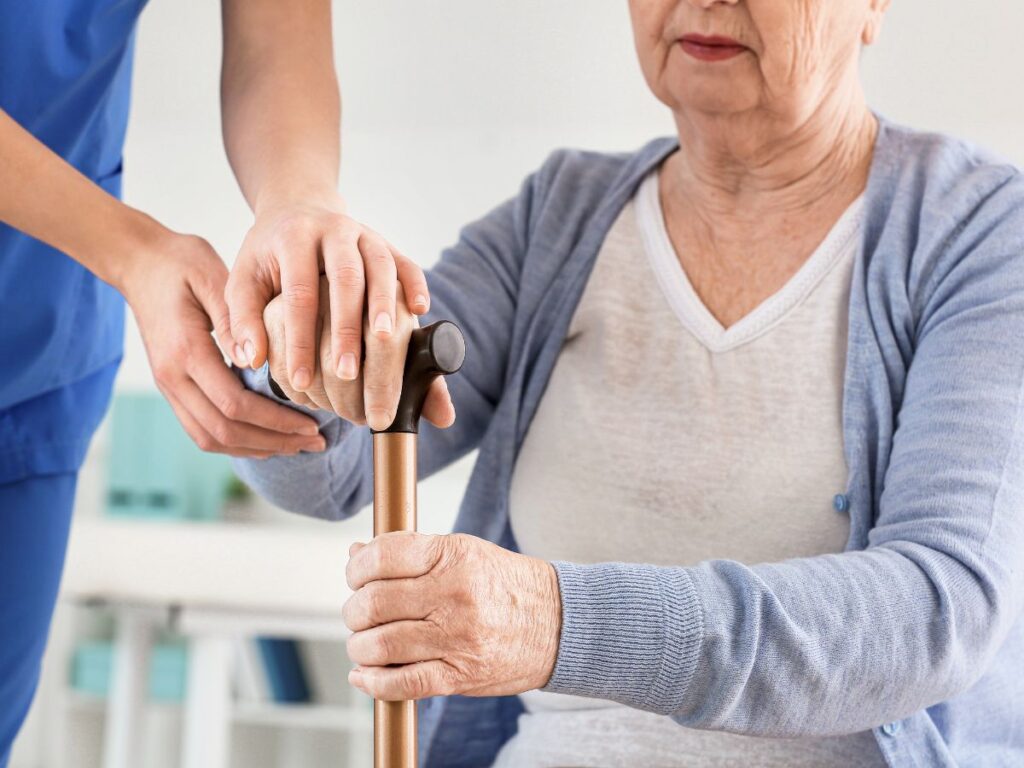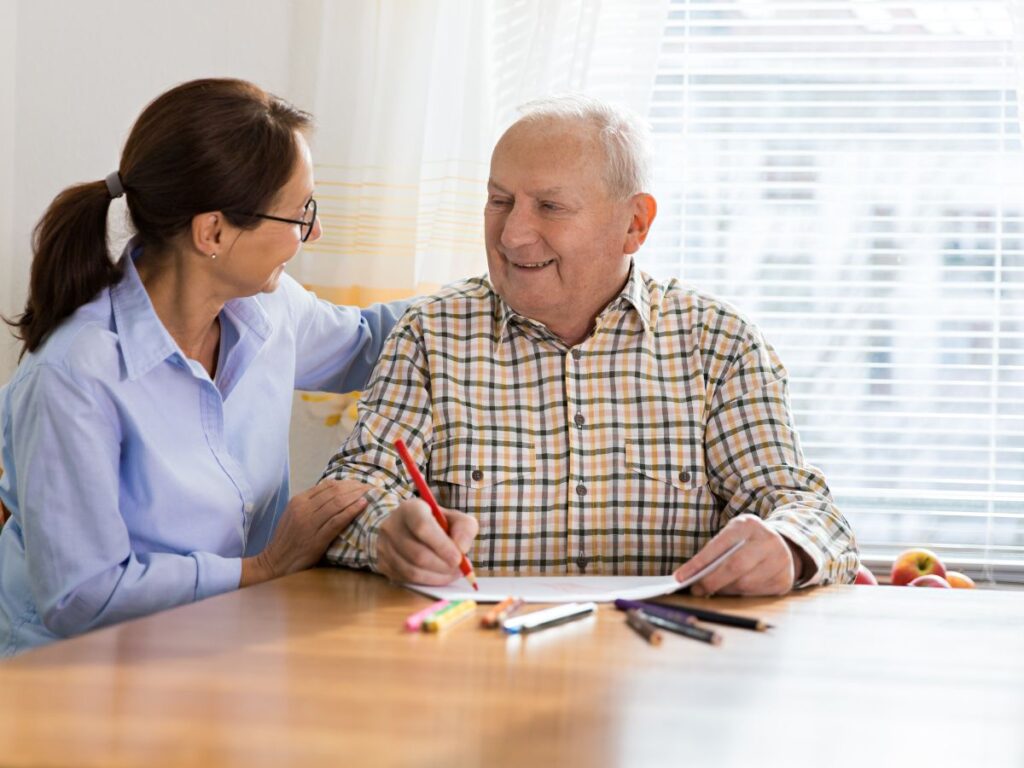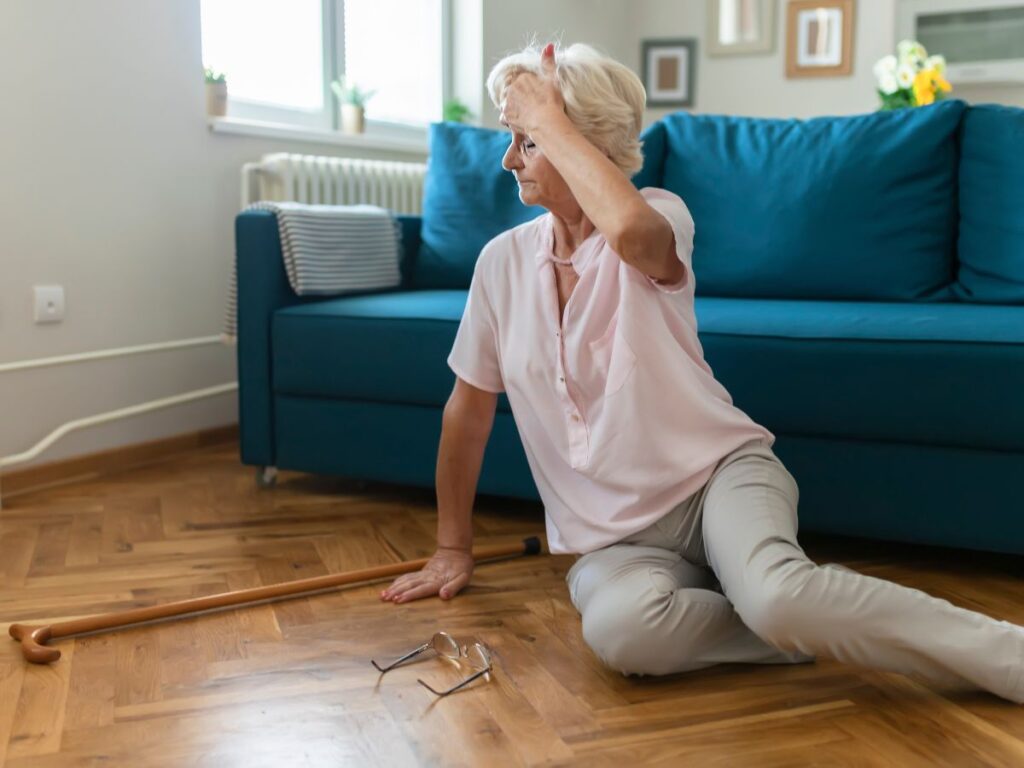Why Arthritis Amplifies Fall Concerns
For older adults grappling with arthritic joints, daily tasks—like climbing steps or rising from a chair—can spark intense pain. Chronic inflammation in knees, hips, or ankles reduces flexibility and weakens muscles. This decline in joint function heightens the risk of stumbling when you least expect it. Fall prevention for arthritis patients blends gentle strength exercises, balancing drills, and Dr. Elham’s alignment checks to stabilize posture and reduce joint stress. By addressing pain triggers, correcting mechanical strain, and reinforcing muscle support, older adults with arthritis can sidestep the threat of frequent tumbles. Ultimately, this approach fosters the confidence to move freely—whether tidying the home or enjoying a short walk—minus the persistent fear of landing painfully on an already aching joint.
Common Reasons Arthritic Joints Cause Falls
Arthritis erodes cartilage, fostering grinding between bones that sparks pain with each step. Muscles around the joint may reflexively tense, restricting range-of-motion. Meanwhile, the body tries to compensate by altering gait, sometimes overloading the opposite leg. Such adaptations often disrupt balance. Fall prevention therapy tackles these factors head-on: building muscle endurance in arthritic limbs, teaching safer foot placement, and employing Dr. Elham’s mild chiropractic input if subluxations aggravate arthritic zones. In time, older adults discover they can maneuver daily movements—like stepping onto a porch or retrieving items from a low shelf—without flinching at every twinge or risking a sudden collapse from uneven steps.
Core Elements of Arthritis Fall Prevention
Though tailored to each patient, a standard plan includes:
- Joint-Specific Exercises: Low-impact routines (like water aerobics, stationary biking) that gently strengthen muscles around inflamed joints.
- Balance and Coordination Work: Tandem walking, single-leg stands, or foam pad drills that train reflexes while respecting arthritic limits.
- Pain and Swelling Management: Heat packs, gentle massage, or bracing for extra joint support during practice.
- Adaptive Equipment Guidance: Advice on canes or walkers used correctly so they don’t aggravate arthritic pain or hamper posture.
- Chiropractic Alignment by Dr. Elham: Minimal force adjustments preventing misaligned spines from overloading arthritic segments.
This comprehensive approach shores up muscle function, clarifies posture, and mitigates arthritic flare-ups so seniors can walk or stand with reduced fear of tipping over from joint pain.
Dr. Elham’s Alignment for Arthritic Stability
When knees or hips ache, older adults might unconsciously shift weight onto the better side, skewing the spine or pelvis. Dr. Elham identifies these patterns, applying mild corrections that center posture. If arthritic shoulders hamper upright stance, gentle manipulations release tension in the upper back. By correcting these subluxations, therapy tasks (like squats or step-ups) equally train both legs. Seniors can distribute their weight more evenly, sparing the inflamed joint from added strain. Over multiple visits, an upright spine plus balanced loading fosters more fluid steps. Freed from the habitual limp that arises from pain, older adults realize each footfall becomes simpler, halving the likelihood of a misstep toppling them forward or sideways.
Why Begin Fall Prevention Early with Arthritis
As arthritis intensifies, chronic discomfort can quickly degrade muscle strength if seniors avoid movement to spare themselves pain. This inactivity then triggers more pronounced stiffness, forming a loop of weakened legs and riskier steps. By starting a fall prevention regimen at the earliest sign of arthritic instability, older adults retain muscular support around the joint, limiting flare-ups. Dr. Elham’s subluxation checks hamper the onset of posture errors that amplify arthritic stress. Engaging therapy early prevents the joint from deteriorating to the point where even moderate household tasks become risky. Instead, seniors maintain enough flexibility and leg power to remain active, forestalling the advanced decline that can confine them to chairs or canes.
Retaining Gains Outside Therapy
Therapists often assign micro-routines: like seated knee extensions, gentle half-squats behind a chair, or leg stretches to ease morning stiffness. If arthritic twinges flare, applying a warm pad or mild rest can soothe joints. Dr. Elham’s alignment cues—like balanced standing posture—help ensure no vertebral tilt re-ignites uneven joint pressure. Over time, these small steps weave therapy’s progress into daily living, with seniors noticing less pain as they climb a small stair or cross a room. Freed from limiting discomfort, tasks like cooking or short errands become opportunities to reinforce stability, anchoring confidence in the body’s capacity to move without constant hazard of falling.
Solving Practical Mobility Hurdles
Fall prevention for arthritis patients zeroes in on real-world stumbling blocks—like stepping off a curb with a painful knee or lifting an object from the floor when hips are stiff. Therapists demonstrate slow, controlled motions, encouraging seniors to bend knees while keeping the spine supported, or to move the arthritic leg last for minimal strain. Dr. Elham’s alignment ensures pelvic neutrality, so weight doesn’t shock the inflamed joint mid-lift. As older adults replicate these strategies in therapy, they soon adopt them at home—bending methodically instead of jerking. This approach fosters a daily rhythm less marred by jolts of pain or abrupt wobbles, letting them maintain chores with greater self-reliance.
Dangers of Ignoring Arthritic Falls
Left unmanaged, arthritic discomfort can spiral into repeated tumbles—each fall risking severe fractures or hospital stays. Fear of reinjury can isolate seniors indoors, accelerating muscle atrophy and amplifying joint degeneration. Overuse of painkillers may follow. Should advanced misalignments set in around the arthritic site, revision surgeries or extensive rehab might become unavoidable. Conversely, methodical therapy builds a stable foundation, quelling the arthritic knee’s ache so older adults remain upright and active. Dr. Elham’s subluxation checks preempt posture distortions that deepen joint wear. Ultimately, ignoring fall prevention allows arthritis to erode both mobility and independence, while therapy preserves daily function and fosters a life of relative ease.
A Typical Arthritis Fall-Prevention Session
Therapists begin by gauging which joints hurt most—knees, hips, or ankles—and how that affects standing or walking. A gentle warmup might involve applying a warm compress to calm stiffness. Dr. Elham inspects the spine or pelvis for subluxations, adjusting as needed. Next, seniors practice slow weight shifts or partial squats with minimal resistance, building tolerance in inflamed joints. If pain spikes, short rests or icing can help. Over sessions, tasks intensify—like stepping onto a low step or navigating foam pads—each time being mindful of arthritic flare-ups. As seniors gain muscle control and posture steadies, everyday tasks that once felt precarious become significantly less painful and uncertain, signaling therapy’s success in taming arthritic-driven falls.
Moving Confidently Despite Arthritis
Fall prevention for arthritis patients transforms a life overshadowed by throbbing joints and unstable steps into one where older adults can trust their stride. Through progressive strengthening, balancing drills, and Dr. Elham’s alignment approach, pain’s grip on daily movement loosens. Freed from the dread that each step might buckle a swollen knee or slip a stiff hip, they can reengage in mild activities—like strolling to a neighbor’s house or tending a small garden. This not only enriches social interaction but also maintains physical vitality, preventing deeper degenerative spirals. Ultimately, a structured program means seniors face arthritis with proactive resilience, stepping forward each day unburdened by the specter of recurring falls and compounding aches.






